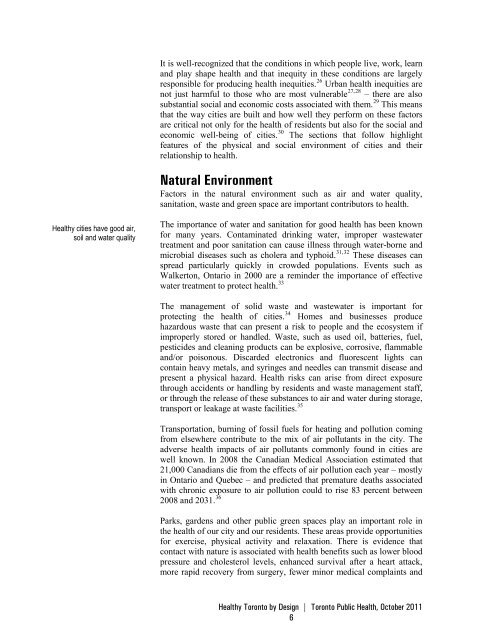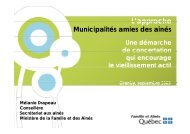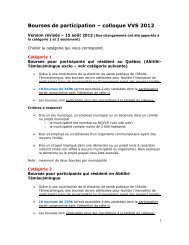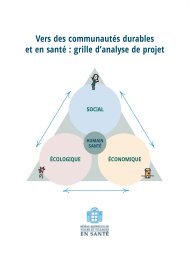Download It
Download It
Download It
- No tags were found...
You also want an ePaper? Increase the reach of your titles
YUMPU automatically turns print PDFs into web optimized ePapers that Google loves.
<strong>It</strong> is well-recognized that the conditions in which people live, work, learnand play shape health and that inequity in these conditions are largelyresponsible for producing health inequities. 26 Urban health inequities arenot just harmful to those who are most vulnerable 27,28 – there are alsosubstantial social and economic costs associated with them. 29 This meansthat the way cities are built and how well they perform on these factorsare critical not only for the health of residents but also for the social andeconomic well-being of cities. 30 The sections that follow highlightfeatures of the physical and social environment of cities and theirrelationship to health.Natural EnvironmentFactors in the natural environment such as air and water quality,sanitation, waste and green space are important contributors to health.Healthy cities have good air,soil and water qualityThe importance of water and sanitation for good health has been knownfor many years. Contaminated drinking water, improper wastewatertreatment and poor sanitation can cause illness through water-borne andmicrobial diseases such as cholera and typhoid. 31,32 These diseases canspread particularly quickly in crowded populations. Events such asWalkerton, Ontario in 2000 are a reminder the importance of effectivewater treatment to protect health. 33The management of solid waste and wastewater is important forprotecting the health of cities. 34 Homes and businesses producehazardous waste that can present a risk to people and the ecosystem ifimproperly stored or handled. Waste, such as used oil, batteries, fuel,pesticides and cleaning products can be explosive, corrosive, flammableand/or poisonous. Discarded electronics and fluorescent lights cancontain heavy metals, and syringes and needles can transmit disease andpresent a physical hazard. Health risks can arise from direct exposurethrough accidents or handling by residents and waste management staff,or through the release of these substances to air and water during storage,transport or leakage at waste facilities. 35Transportation, burning of fossil fuels for heating and pollution comingfrom elsewhere contribute to the mix of air pollutants in the city. Theadverse health impacts of air pollutants commonly found in cities arewell known. In 2008 the Canadian Medical Association estimated that21,000 Canadians die from the effects of air pollution each year – mostlyin Ontario and Quebec – and predicted that premature deaths associatedwith chronic exposure to air pollution could to rise 83 percent between2008 and 2031. 36Parks, gardens and other public green spaces play an important role inthe health of our city and our residents. These areas provide opportunitiesfor exercise, physical activity and relaxation. There is evidence thatcontact with nature is associated with health benefits such as lower bloodpressure and cholesterol levels, enhanced survival after a heart attack,more rapid recovery from surgery, fewer minor medical complaints andHealthy Toronto by Design | Toronto Public Health, October 20116
















